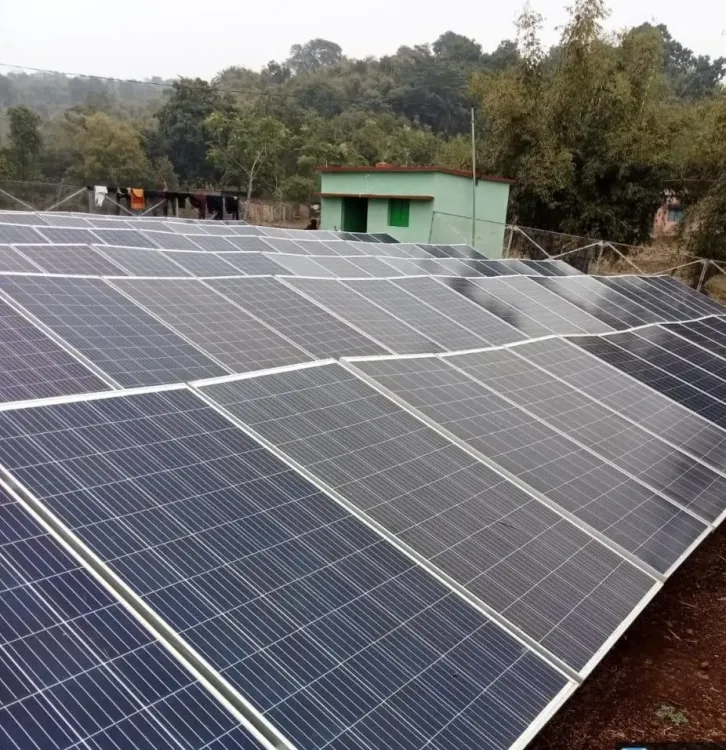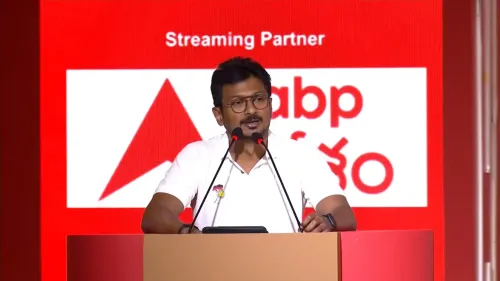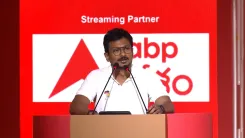Is India the World's 3rd Largest Solar Producer?

Synopsis
Key Takeaways
- India is the third largest solar producer with 125 GW capacity.
- Surpassed renewable energy targets five years ahead of schedule.
- The International Solar Alliance unites 124 countries.
- Initiatives like PM Surya Ghar Muft Bijli Yojana benefit millions.
- India aims to produce 5 million tonnes of green hydrogen by 2031.
New Delhi, Oct 9 (NationPress) With about 125 GW of solar capacity, India has ascended to the position of the third largest solar producer in the world, as stated by Pralhad Joshi, the Minister of New and Renewable Energy.
Thanks to its visionary leadership and steadfast policies, India has surpassed its renewable energy objectives five years ahead of schedule, reaching over 50 percent of its total electricity capacity from non-fossil sources, the minister revealed at the launch event for the 8th session of the International Solar Alliance (ISA) assembly, which is set to occur from October 27-30 in the national capital.
Initiated by India and France during COP21 in Paris, the ISA is the largest treaty-based intergovernmental organization from the Global South, uniting 124 Member and Signatory Countries.
This high-level ministerial meeting arrives just weeks before COP30 in Brazil, aiming to define priorities for scaling solar energy, unlocking transformative financing, developing technology and policy frameworks, and establishing skill ecosystems to facilitate a just and inclusive energy transition.
“India's success narrative extends beyond mere statistics; it’s centered around the people. We have witnessed how decentralized solar energy changes lives, illuminating rural homes, powering local health facilities, and providing new resources to our farmers. Under the PM Surya Ghar Muft Bijli Yojana, over 20 lakh households are currently benefiting from solar energy,” remarked Joshi.
He added that through the PM-KUSUM scheme, “we are bringing this transformation to the heartland of India.”
“The three components of this initiative aim for the installation of 10 gigawatts of small solar plants, support 1.4 million off-grid solar pumps, and solarize 3.5 million grid-connected agricultural pumps. Together, these initiatives ensure that clean energy reaches even the most remote areas. This combination of scale and inclusivity defines India's energy transition,” the minister emphasized.
Santosh Kumar Sarangi, Secretary of the Ministry of New and Renewable Energy, highlighted, “Today, we rank third in solar power, fourth in wind power, and overall, we are the third largest in renewable energy installations worldwide.
“Moreover, in solar module manufacturing, we hold the position of second largest after China. Our manufacturing efforts extend beyond solar modules to include sectors like green hydrogen, which is crucial for our energy security. We are on track to produce approximately 5 million tonnes of green hydrogen by 2031,” he pointed out.
Ashish Khanna, Director General of ISA, stated that global renewable energy is at a critical juncture.
“It took oil 25 years to reach 1,000 GW — renewables achieved that milestone in just two years. For the first time, renewable generation has outstripped fossil generation. This is a pivotal moment for the Global South to take the lead,” he added.









